The Executive Committee consists of eight U-M faculty representing different departments across three colleges and school. The committee supports the implementation of the mission of the Center for RNA Biomedicine.

Associate Professor, Molecular, Cellular, and Developmental Biology College of LSA saton@umich.edu
Sara Aton, Ph.D.
The functions of sleep are a major unsolved mystery in modern biology. Increasing evidence suggests that sleep is by and for the brain, and our lab is focused on understanding what sleep does for fundamental brain functions such as storage of newly-learned information.
While some of our lab’s work is focused on electrophysiological aspects of sleep and their role in optimizing brain function, more recently we have focused on biochemical changes associated with both learning and subsequent sleep. One important issue is that rates of protein synthesis appear to differ between wake and sleep. Moreover, sleep-dependent protein synthesis appears to be critical for the process of memory consolidation. However, it is unclear which transcripts are translated during sleep, what cell types this synthesis occurs in, the functional consequences of these events, and what aspects of sleep drive them. We have recently begun to address this by profiling ribosome-associated transcripts in a cell type and cell compartment-specific manner, across learning and sleep. We have also found that lncRNAs and microRNAs are affected by brain state, suggesting additional levels of transcript regulation during sleep.
More information and publication list are available on the Sara Aton Lab website.
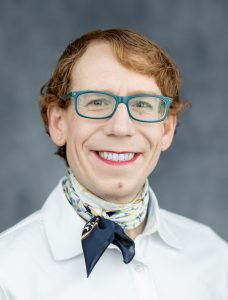
Associate Professor
Biological Chemistry and
Computational Medicine and Bioinformatics
Medical School
Lydia Freddolino, Ph.D.
The regulatory networks of bacteria play a key role in their information processing capabilities, coordinating and executing interactions with their environments. Quantitative, predictive models of these networks would be tremendously beneficial for facilitating the development of new antimicrobial therapies, enabling synthetic biology applications, and understanding bacterial evolution and ecology. Ultimately, the aim of my laboratory is to build a multiscale framework enabling modeling of bacterial regulatory networks at any level of detail, from atomistic to cellular. To this end, we develop and apply high-throughput experimental methods for measuring biomolecular interactions and cellular regulatory states in vivo, and for profiling the phenotypic consequences of regulatory changes. In tandem with these experimental approaches, we use molecular simulation and mathematical modeling to obtain high-resolution insight into the biomolecular interactions driving regulatory networks, and the systems-level effects of altering them.
More information and publication list are available on the Freddolino lab website.
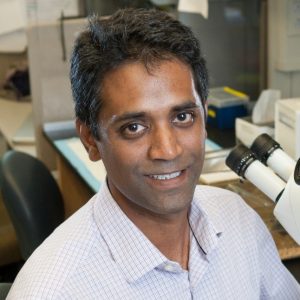
Associate Professor of Human Genetics
kalantry@umich.edu
Sundeep Kalantry, Ph.D.
The focus of Kalantry laboratory is to understand how X-chromosome inactivation occurs. X-inactivation equalizes X-linked gene expression between male and female mammals by transcriptionally inactivating one of the two X-chromosomes in females. X-inactivation is required for the viability of female cells and is a paradigm of epigenetic inheritance, given that within a shared nucleoplasm one X-chromosome of an identical pair becomes inactivated while the other remains active and that replicated copies of the inactive and active X-chromosomes faithfully maintain their transcriptional states across many cell division cycles. X-inactivation is controlled by long non-coding RNAs and chromatin/transcription regulators, both of which are a focus of our lab.
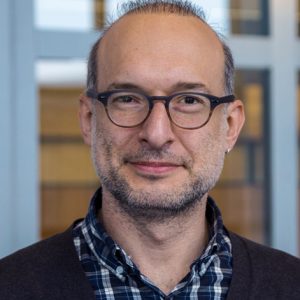
Assistant Professor, Chemistry and Biophysics
mkoutmos@umich.edu
Markos Koutmos, Ph.D.
Markos Koutmos is an Assistant Professor in the Departments of Chemistry and Biophysics, with an affiliation with the graduate Program in Chemical Biology. Dr. Koutmos received his Diploma in Chemistry from the University of Athens, Greece, and obtained his Ph.D. in inorganic chemistry at the University of Michigan. He then trained in macromolecular crystallography in the laboratories of Drs. Martha Ludwig and Janet Smith before launching his independent career in the Department of Biochemistry and Molecular Biology at the Uniformed Services University of the Health Sciences.
Dr. Koutmos and his lab joined the University of Michigan in 2018. The Koutmos lab has a long-standing interest in understanding how the 3D structure and dynamics of proteins and RNAs drive their biological function. His lab combines chemistry, biophysics and biology approaches to build a foundation of basic knowledge for understanding the remarkable chemistries catalyzed by nature’s best enzymes, uncovering the roles of biomacromolecules in disease, and discovering new classes of therapeutic targets. The Koutmos lab is specifically interested in RNA modifications and RNA/protein interactions, in mitochondrial RNA biology and processing and in RNA structure and dynamics.
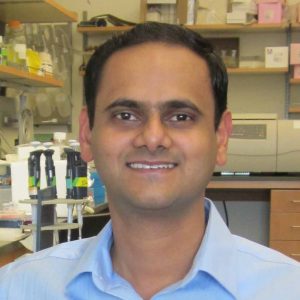
Associate Professor of Molecular, Cellular and Developmental Biology
jknanda@umich.edu
Jayakrishnan Nandakumar, Ph.D.
Nandakumar Lab utilizes a combination of biochemistry, structural biology, and cell biology to understand the molecular basis for end protection of human chromosome ends by the shelterin complex, and end replication by the ribonuclear protein enzyme telomerase. I started as an assistant professor at University of Michigan in Fall of 2013 and brought with myself extensive expertise in biochemistry, X-ray crystallography and human cell biology.
Our group recently described how a mutation in the gene coding for TPP1 results in the telomerase deficiency disease, dyskeratosis congenita (Kocak et al). These studies were inspired by my postdoctoral efforts that discovered a surface in TPP1 called the TEL patch, which binds telomerase to recruit it to its site of action in the cell and facilitates telomere elongation. While our efforts on the TEL patch highlight our interest in end replication, my postdoctoral studies also interrogated in depth the role of TPP1, and its binding partner, POT1, in end protection. As part of my graduate studies I solved several crystal structures of RNA and DNA ligases bound to their ‘broken’ RNA/DNA substrates to illustrate how these two families of repair enzymes use distinct strategies for joining RNA versus DNA ends.
Most recently, we have come across a novel form of gene regulation that involves an intragenic noncoding RNA, which differentially influences the fates of isoforms of a telomeric gene.
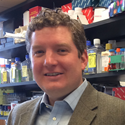
Associate Professor, Computational Medicine and Bioinformatics and Associate Professor of Human Genetics
scjp@umich.edu
Stephen C.J. Parker, Ph.D.
The Parker Lab at the University of Michigan is part of the Departments of Computational Medicine & Bioinformatics and Human Genetics, and is affiliated with the Genome Science Training Program at the Center for Statistical Genetics and the Center for RNA Biomedicine.
Our research group uses an integrative approach in the general fields of computational biology and functional genomics. The major goal of the lab is to generate mechanistic knowledge about how disease susceptibility is encoded in the non-coding portion of the genome, with a focus on type 2 diabetes.
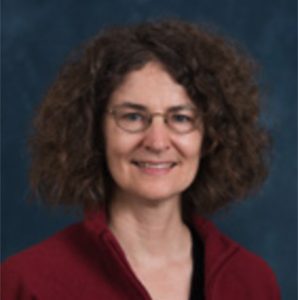
Research Professor
Biostatistics
School of Public Health
ljst@umich.edu
Laura Scott, Ph.D.
Laura Scott is a Research Professor in the Department of Biostatistics, School of Public Health. She received her PhD in Cell Biology from Johns Hopkins School of Medicine in 1993 and an MPH in Epidemiology from the University of Michigan School of Public Health in 1995. Following training in the epidemiology of breast cancer and hypertension at Michigan State University and in the epidemiology and genetic epidemiology of complications of type 1 diabetes at the Joslin Diabetes Center, she moved to the University of Michigan in 2000 to work in statistical genetics. She joined the Department of Biostatistics faculty in 2003.
Dr. Scott’s goal is to understand the regulatory environment of muscle and adipose, with emphasis on understanding how genetic variants influence the risk of Type 2 diabetes and related diseases. To do this they integrate mRNA and microRNA-Seq data from ~300 Finnish muscle and adipose biopsy samples with ATAC-Seq, metabolites, phenotypes and genetic data. Dr. Scott is interested in how sex changes cell type composition and influences gene expression patterns within different cell types. She is interested in how regions of the genome can be differentially regulated by genetic variants, sex, and BMI (or other trait) levels, and if these signals work independently or in an conserted fashion to influence gene expression.
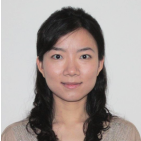
Assistant Professor
Biological Chemistry
yzhangbc@umich.edu
Yan Zhang, Ph.D.
CRISPR-Cas is a RNA-guided, genetic interference pathway in prokaryotes that enables acquired immunity against invasive nucleic acids. Nowadays, CRISPRs also provide formidable tools for facile, programmable genome engineering in eukaryotes. Cas9 proteins are the “effector” endonucleases for CRISPR interference; and have recently begun to be also recognized as important players in other aspects of bacterial physiology (e.g., acquisition of new spacers into CRISPRs, endogenous gene regulation, microbial pathogenesis). The Yan Zhang laboratory is broadly interested in CRISPR biology and mechanism. We use Neisseria species as our model system, and E. coli and human cells as additional platforms. We employ complementary biochemical, microbiological, genetic and genomic approaches. We are also interested in working with the broader scientific community to develop and apply novel CRISPR-based tools to tackle diverse biological questions.
